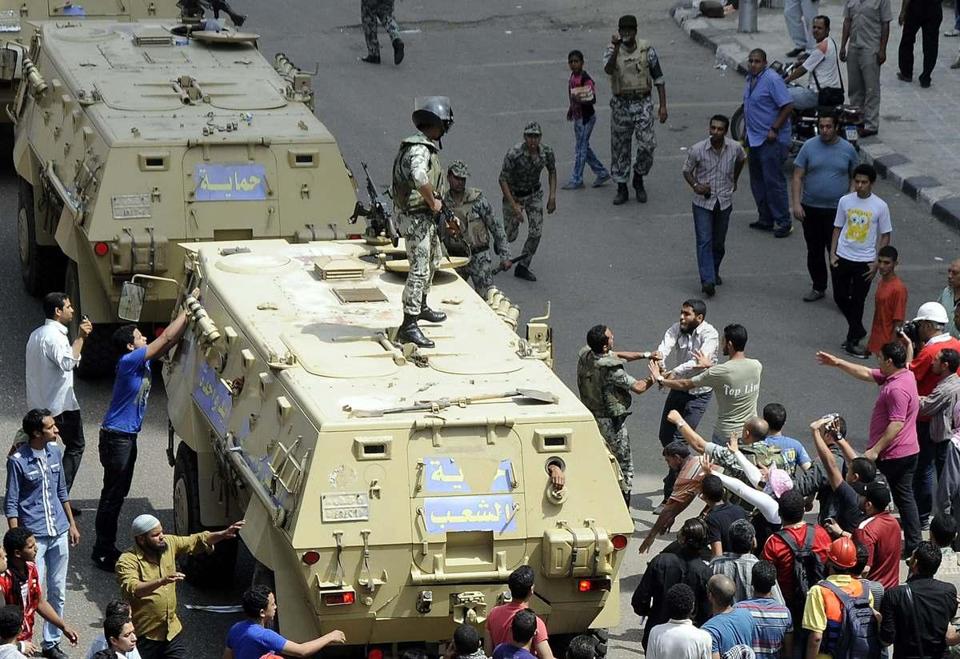CAIRO: Dubbed the day of anger, April 6 came and went leaving Egyptians oscillating between those who believe it was a failure, others who think it was a success and those who chose to ignore it altogether.
It wasn’t only the lack of participation of Mahalla factory workers that led to a low turnout.
A heavy security presence was instrumental in stifling the protest, as the Al Jazeera crew found out firsthand when they were prohibited from entering the city which saw violent clashes between protestors and riot police last year, leading to the death of three people.
Commenting on the Monday events, Diaa El Sawy, one of the founders and spokesmen of the April 6 youth movement, told Daily News Egypt, “We think it succeeded to a certain extent, because from the beginning we did not say we were organizing the strike, we were just calling for it. The only organized the students’ protests and these were more successful.
There were demonstrations at nine universities in Alexandria, Helwan, Sharqeya and Mansoura. Students in Kafr El-Sheikh were arrested two days before for handing out leaflets encouraging fellow students to join an on-campus march on April 6.
“We cannot judge [this movement’s] success by what happened on the day; it is the birth of civil disobedience and its effects will be seen in the future, El Sawy added.
In Cairo, a combination of an unusually high security presence and low turnout ensured that many of the planned protests were foiled, leaving only a poorly attended one on the steps of the Journalists Syndicate, the only venue where protests are allowed by the regime.
“Security has learnt a lot from 2008 so their presence was felt everywhere. They have been asking pedestrians to show ID randomly for a week before April 6, El Sawy said.
He added that many groups that had announced their intention to participate were contacted by security beforehand and promised that their issues will be addressed.
“We see this as a success because their demands were met before the strike, said El Sawy.
However clashes did erupt between students of Ain Shams University and security forces. According to the April 6 Youth Movement, 53 students were initially rounded up. Currently 12 belonging either to the Muslim Brotherhood or the April 6 movement remain in detention at the Nasr City police station.
Mohammed Abdel-Quddous, head of the freedoms committee at the Journalists’ Syndicate, said, “It was a day of anger, not a day of strikes. People were overly optimistic because they misconstrued that it would be a day of strikes.
Coverage of the day in the official and opposition press was markedly different.
The state-run Al-Ahram’s front page headline said that people had ignored what it termed “calls for a suspicious strike. It published pictures of students walking peacefully on university campuses and factory workers going about their daily tasks, completely ignoring any mention of the clashes at Ain Shams University and the ensuing arrests.
However opposition paper Al-Doustor published photos of the clashes and dedicated three of its pages to coverage of the various strikes that took place on the day.
It led its coverage with a description of the intensive security presence throughout Cairo and the governorates as instrumental in preventing demonstrators from joining any protests.
Diaa Rashwan, an analyst at Al-Ahram Center for Political and Strategic Studies, said that the initial mistake was in not clearly identifying what the day signifies in the first place. “Was it a day of anger of or a day of strikes? he asked. “This caused confusion and we cannot determine whether or not it succeeded because we are not sure what it was supposed to be.
Abdel-Quddous – who was detained by security forces on the morning of April 6 last year before being released later that night – attributed the low turnout to the fact that the initiative was led by the April 6 youth movement which made other groups decide to step back in order to put the youth in the forefront.
Youth leader El Sawy, however, remained up-beat. “This is a failed regime and it cannot solve its peoples’ problems permanently so these groups will be back. They know that the state only responds to them when they intend to strike so they will do it again, he said.

